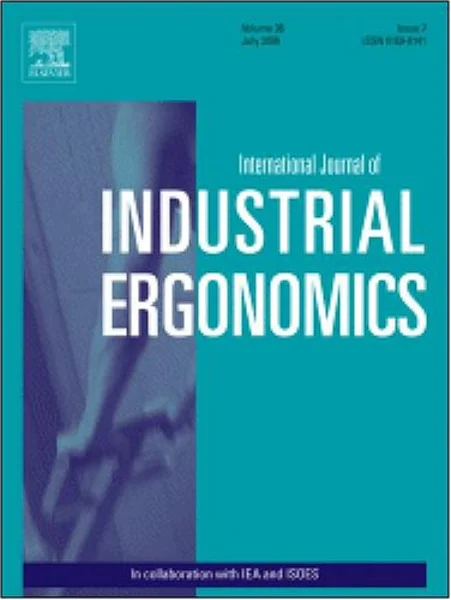-
differences in lifting strength profiles between experienced workers and novices at various exertion heights
جزئیات بیشتر مقاله- تاریخ ارائه: 1390/02/13
- تاریخ انتشار در تی پی بین: 1390/02/13
- تعداد بازدید: 333
- تعداد پرسش و پاسخ ها: 0
- شماره تماس دبیرخانه رویداد: -
this study compared lifting strength patterns between experienced workers and novices at various exertion heights. twenty-one experienced workers and 21 novices were recruited to determine their static-lifting strength under various heights (10–150 cm in increments of 10 cm) using two exertion methods (vertically upward lifting, vul, and toward body lifting, tbl). testing posture was also recorded by a motion analysis system for comparing with the corresponding strength values. results showed that strength during vul were much higher than strength during tbl at 15 height positions (p < 0.001). strength in all 30 task combinations showed no difference between the two groups except for the vul at heights of 100–120 cm. on the average, strength exerted by novices during vul was 4.57–7.61 kg lower than that of workers while lifting at 100–120 cm heights (all p < 0.05). the strength during tbl consistently decreased with increased heights of lifting. when workers performed vul, the strength surprisingly remained nearly unchanged throughout the heights of interest. the postures adopted by workers during vul were also highly differentiated from novices while performing near-floor positions, but the strength was equivalent to each other. this study demonstrated that the static-lifting strength of novices were significantly lower than those of experienced workers while upward lifting near the participant’s elbow height. it was concluded that workers tend to adopt a safer (i.e., more flexed knees) and more skillful technique than novices to generate forces, resulting in lower spinal loads during both methods of lifting. relevance to industry many studies have established the human strength data based on student participants who do not have experience in manual materials handling. the present findings clearly suggest that lifting strength data collected on novices (e.g., on students) should be carefully applied in the task (re)design at the workplace as their strength profiles and the postures adopted during lifting differ from workers.
مقالات جدیدترین رویدادها
-
استفاده از تحلیل اهمیت-عملکرد در ارائه الگوی مدیریت خلاقیت سازمانی و ارائه راهکار جهت بهبود
-
بررسی تاثیر ارزش وجوه نقد مازاد بر ساختار سرمایه شرکت های پذیرفته شده در بورس اوراق بهادار تهران
-
بررسی تأثیر سطح افشای ریسک بر قرارداد بدهی شرکت های پذیرفته شده در بورس اوراق بهادار تهران
-
بررسی تأثیر رتبه بندی اعتباری مبتنی بر مدل امتیاز بازار نوظهور بر نقد شوندگی سهام با تأکید بر خصوصی سازی شرکت ها
-
تأثیر آمیخته بازاریابی پوشاک ایرانی بر تصویر ذهنی مشتری پوشاک ایرانی (هاکوپیان)
-
قابلیت های ژئوتوریستی زاگرس
-
بررسی تاثیرات شکل خاکریز پشت دیواره اسکله کیسونی بر روی رفتار لرزه ای آن
-
رفتار شناسی جامعه در رابطه با مسابقات المپیک 2016 در ایران و خراسان جنوبی در مقایسه با کشورهای منتخب
-
سرمایه گذاری در مشتقات مالی و تاثیر آن بر بازدهی سبد اوراق بهادار
-
numerical analysis of the stability of breakwater armor units due to sea wave attacks
مقالات جدیدترین ژورنال ها
-
مدیریت و بررسی افسردگی دانش آموزان دختر مقطع متوسطه دوم در دروان کرونا در شهرستان دزفول
-
مدیریت و بررسی خرد سیاسی در اندیشه ی فردوسی در ادب ایران
-
واکاوی و مدیریت توصیفی قلمدان(جاکلیدی)ضریح در موزه آستان قدس رضوی
-
بررسی تاثیر خلاقیت، دانش و انگیزه کارکنان بر پیشنهادات نوآورانه کارکنان ( مورد مطالعه: هتل های 3 و 4 ستاره استان کرمان)
-
بررسی تاثیر کیفیت سیستم های اطلاعاتی بر تصمیم گیری موفق در شرکتهای تولیدی استان اصفهان (مورد مطالعه: مدیران شرکتهای تولیدی استان اصفهان)
-
تاثیر شهرت شرکت و مالکیت نهادی بر رابطه بین افشای اطلاعات آینده نگر و نوسان پذیری بازده سهام
-
تعیین مکان بهینه فضای سبز شهری با بهره گیری از سیستم اطلاعات جغرافیایی gis و روش index overlay (مطالعه موردی: بافت قدیم شهر ارومیه)
-
بررسی تاثیر مسئولیت اجتمایی و برون سپاری بر عملکرد سازمانی: نقش تعدیل کنندگی عدم اطمینان محیطی (مورد مطالعه: شرکت میهن شهر کرمانشاه)
-
ماهیت رجوع از شهادت و پیامدهای آن
-
assessment of the total petroleum hydrocarbons and heavy metal concentrations in soils around car washing stations in misurata, libya




سوال خود را در مورد این مقاله مطرح نمایید :